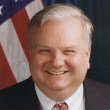
Commentary
-
Our commentary partners will help you reach your own conclusions on complex topics.
Well, everything must be going great. Stock market’s up. It’s been touching new records for most of this year. The Federal Reserve just raised its forecast for 2022, from 3.3% to 3.8%. They’re even more optimistic than they were. That 3.8% growth rate is about twice what the Fed thinks the economy can grow at over the long-term.
Not only that, everyone, in Washington anyway, seems to think the good times will continue to roll, but the public doesn’t seem to think that way. Particularly consumers. There are a number of indices of consumer confidence. One of them is the conference board and its October reading was 12% below its June reading. The University of Michigan also has an index out there to measure consumer attitudes. In October it hit its lowest level. In a decade, it was down 26% from the April reading.
The National Federation of Independent Businesses is a small business group that regularly surveys its members. Now remember, small business people, both are income earners for households as well as employers. And so it’s worth a lot of attention to see what they’re saying.
Here’s their forecast for six months out, they were asked, will things be better or will things be worse six months from now?
Well, the worse beat the better by 37 points. You know, that’s like a 70, 30, margin in an election, a real landslide. Small business people just like consumers are becoming much more pessimistic about what lays ahead. At the root of this and where it’s showing up and it’s actually reinforcing things are lots of indicators of worker dissatisfaction. Consumers aren’t just unhappy when they go shopping. They’re also unhappy about work. Consider for example what we call the labor force participation rate — the share of people who are either working or looking for work and let’s narrow it down to 25 to 54 year olds.
And that’s sort of the prime age group for the labor force.
Well, unemployment has come down dramatically since, uh, COVID began. We’re now down to just 4.6%. unemployment. Jobs are easy to find. And when jobs are easy to find, labor force participation goes up because it’s easy to find a job. Doesn’t take much work. I may as well go look, but that didn’t happen this time.
Labor force participation is still one and a half points below what it was in February of 2000. Sounds like funny numbers. Let me put it in other terms. We have over 4 million people who used to be willing to work now not willing to work. Well, we wonder why we have supply chain problems and why they can’t find qualified workers. Well, 4 million of them decided not to work. Not only that people who are working are now regularly quitting their jobs.
We’ve now just had in the last month, 4.4 million people quit in one month.
That’s a 3% quit rate — the highest in many, many decades.
Well, just think about that in terms of any business you are associated with. If 3% of the people quit in a month, that means 36% of them quit over the course of the year.
Right? Imagine having more than a third of the people in any company quit. Well, there’s a good reason why they’re quitting, and that is that if they quit, they can usually command higher pay.
So just in the last few months, overall wages have started to climb. They’re up to 5.8%. But people who switched jobs have seen their wages go up 14.6%, basically three times as much.
So if you want to make more money, and you want to keep up with inflation, the thing to do is at least threaten to quit. And if the boss doesn’t give you what you want, then quit, you’ll find a job really quickly and you’ll get a big pay hike.
Well, this is going to be a problem going forward. So we now have people quitting to get more pay. But when they get more pay the costs of production go up, businesses have to raise prices to try and recoup that extra costs, which means workers have to demand even more money to keep up with inflation.
This is called a wage price spiral.
When these things end, there’s really only one way to stop a spiral.
And that is to raise interest rates so high that the economy comes either to a recession or it shrinks or something very close to a recession.
We all hope that doesn’t happen. Just history says that is what happened, but the Fed doesn’t want it to happen anytime soon, and neither does the Congress.
So that way I think what we’re going to see is the Fed stand back and inflation is going to go higher and higher.
-
Election 2024 will boil down to the Great Lakes states
Pollsters and pundits have been engaged in a long debate about how Biden or Trump might win the 2024 election, with much of their focus spent on the “swing state” electoral battlegrounds. While the winners of Alabama or California may be obvious, for instance, who wins Pennsylvania is a more difficult question. Watch the above… -
Why the Fed should consider Theory of Reflexivity when fixing policy
The Theory of Reflexivity, often used in the context of economics and financial markets, implies that investors don’t base their decisions on reality but on their perceptions of reality. This creates a feedback loop where investors’ perceptions influence economic fundamentals, which in turn alter investor perceptions. Watch the above video as Straight Arrow News contributor… -
Federal Reserve surpassed its own wildest expectations
On May 14, the U.S. Bureau of Labor Statistics released the most current producer price index (PPI) report, which showed an increase of 0.5% month-over-month in April. After the report’s release, U.S. Federal Reserve chairman Jerome “Jay” Powell said that while he believes the current policy rate is restrictive by many measures, the Fed needs… -
Polls give slight advantage to Trump in Electoral College
With the U.S. general election only six months away, leading candidates President Joe Biden and former President Donald Trump appear to be engaged in a very close contest. In their 2020 race, the winner of the Electoral College was ultimately determined by a relative handful of voters in just a few swing states, even though… -
College sports is big money but not everyone benefits
March Madness has wrapped up and Caitlin Clark has emerged as a household name as well as a wealthy student athlete. Earning over $3 million throughout her college career, her success stands in stark contrast to the previous notion that collegiate athletes shouldn’t earn anything beyond their scholarship. Straight Arrow News contributor Larry Lindsey examines…
Latest Opinions
-
 Getty Images
Getty Images
Andrew Cuomo announces NYC Mayor candidacy
-
 Getty Images
Getty Images
US troops bolster border security to curb illegal crossings
-
 Getty Images
Getty Images
Zelenskyy meets with British prime minster following tense Trump meeting
-
 Getty Images
Getty Images
Trump admin. asks federal workers to detail weekly accomplishments, again
-
 Getty Images
Getty Images
Military members with gender dysphoria to be processed for separation: DOD
Popular Opinions
-
In addition to the facts, we believe it’s vital to hear perspectives from all sides of the political spectrum.






